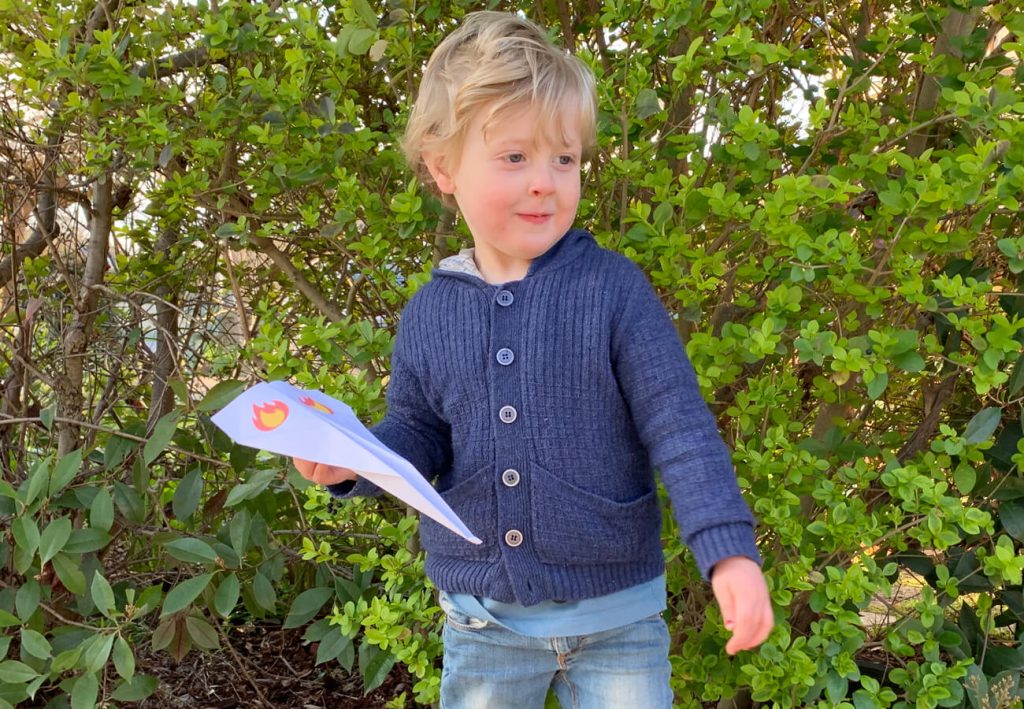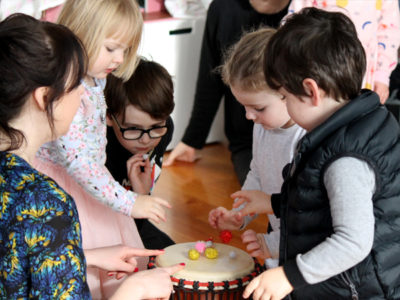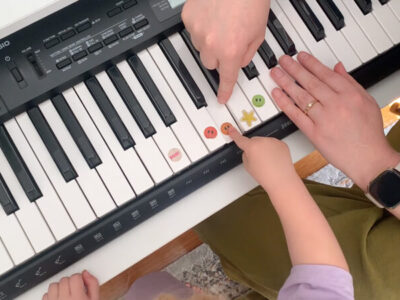Guest post by Tiffany Ross

Ever wondered why your child just “has” to throw food off the high chair or “must” keep drawing on the walls? It’s not to get under your skin. They are exploring play schemas.
Play is an important part of children’s development. It gives them the opportunity to learn and practice new skills, develop relationships, and explore their surroundings. Through play, children develop their understanding of how the world works and will continue to repeat and test their limits until that understanding is formed. They do this through developing play schemas.
Schemas within our brains are like mind maps for how we understand the world and how ideas link together. Each link in this mind map is a neural pathway in our brain. The more children explore an idea, the stronger these links become and the more complex their understanding of the world becomes. As children discover new information, they integrate it into their mind map. Their mind map becomes increasingly complex the more they learn.
Schemas can be frustrating for caregiving adults, but it is easier to work with them than against them. Children will repeat the same game or sequence to strengthen their neural pathways to allow them to access this knowledge faster in the future. Trying to stop this behaviour is like trying to stop the tide.
The Schemas are the ‘why’ and ‘how’ of the child’s play, not the ‘what’ they are playing with.
Play schemas are ‘how’ our minds work when we engage in play. This form of play is a need that children are drawn to, and it is not something they can control, rather they are drawn to work it out and will keep trying until they get it. They help us understand why different objects make different sounds as they hit the floor, why some things roll and others don’t, how colours can mix, or how to build.
You can learn which schemas your child is in by observing their play. For example, if your child often stacks blocks and then knocks them down, then your child may be using the trajectory schema. Similarly, if your child likes to line materials up by size or order, then it is likely that they are using the positioning schema. It is not the fact they are playing with blocks that we need to focus on, but rather on how they are using them.
Here are the main schemas we might see when observing our children:
Trajectory Schema
In the trajectory schema, the child follows a pattern of movement as they explore gravity and motion. Children working in this schema often throw food from their high chairs, love balls, and won’t stop making paper aeroplanes.
Head to the Gumnut Music TV Trajectory Playlist to learn ways to support your child during this play.
Transforming Schema
The transforming schema is the ability to change the shape or form of an object. For example, mixing all the paint or playdough colours. This schema is really obvious when children engage with mud kitchens or potion making.
Connecting Schema
Connecting schema is when children connect objects together. They may, for example, place one object on top of another and then take it away. Children are seeing how each part of their world is made, so sometimes this schema can be children taking things apart (or breaking them) to see the inner workings of an item or toy.
Transporting Schema
Transporting schema is about moving objects from one place to another. It is a very common theme of play and children may be interested in trucks, cars, trains, boats, and planes.
Children working in this schema love trollies and moving items into random areas of the house. Toddlers in particular are drawn to this schema and have a desire to carry the heaviest thing they can possibly manage.
Rotating Schema
The rotating schema is a type of play that involves toys that rotate or revolve on their axes, such as the wheel on a toy car, the hands on a clock, a spinning top, or the dirty pram wheel.
When children play with these kinds of toys, they can rotate them around their axis to change how they look or spin them around for different patterns.
Enveloping Schema
Enveloping Schema is a child’s need to create a space or container. This schema can be seen in children who love playing hide-and-seek, peekaboo or with shoeboxes. They may also love using blankets as cocoons or hats as armour.
This schema works on the concept of “object permanence”, trusting that something is there even when it can not be seen.
Positioning Schema
The positioning schema is seen when children put things in order or line them up. This schema is obvious when you find lines of toys on shelves or window cills. In this schema children are creating a sense of order in their world – this “order’ does not always seem logical to anyone else.
Enclosing Schema
The enclosing schema is the process of enclosing an object, however, it is not completely hidden. Children in this schema love things like farm paddocks in small world play or like to see if they can fit themselves into every container or box they can find. Children in this schema, climb on shelves or into cupboards to test out the capacity of the space.
Conclusion
Understanding the play schemas helps you understand what your child is doing when they play. You can use this information to support you child and provide opportunities for them to explore a schema. Once you see a behaviour as learning rather than your child being difficult, it is a game changer in parenting.
Follow Tiffany on Instagram @simplifyingchildhood





